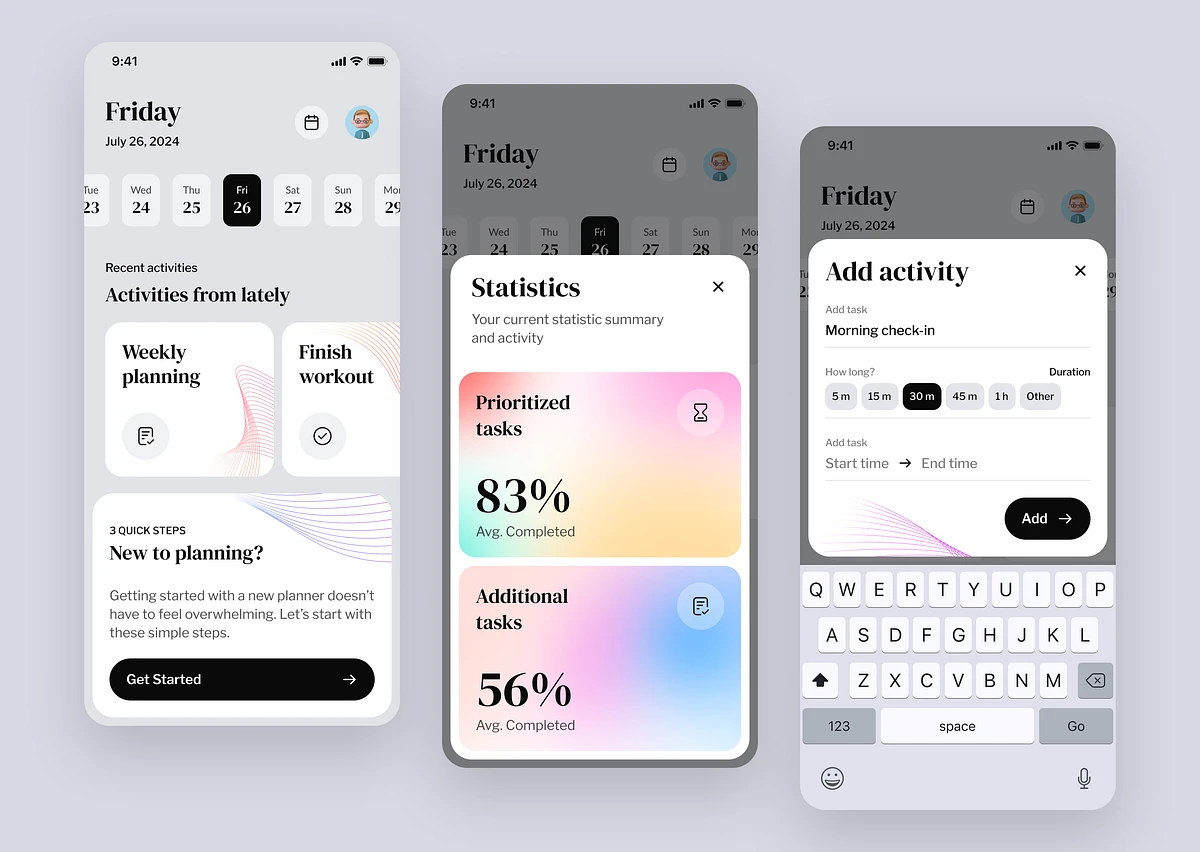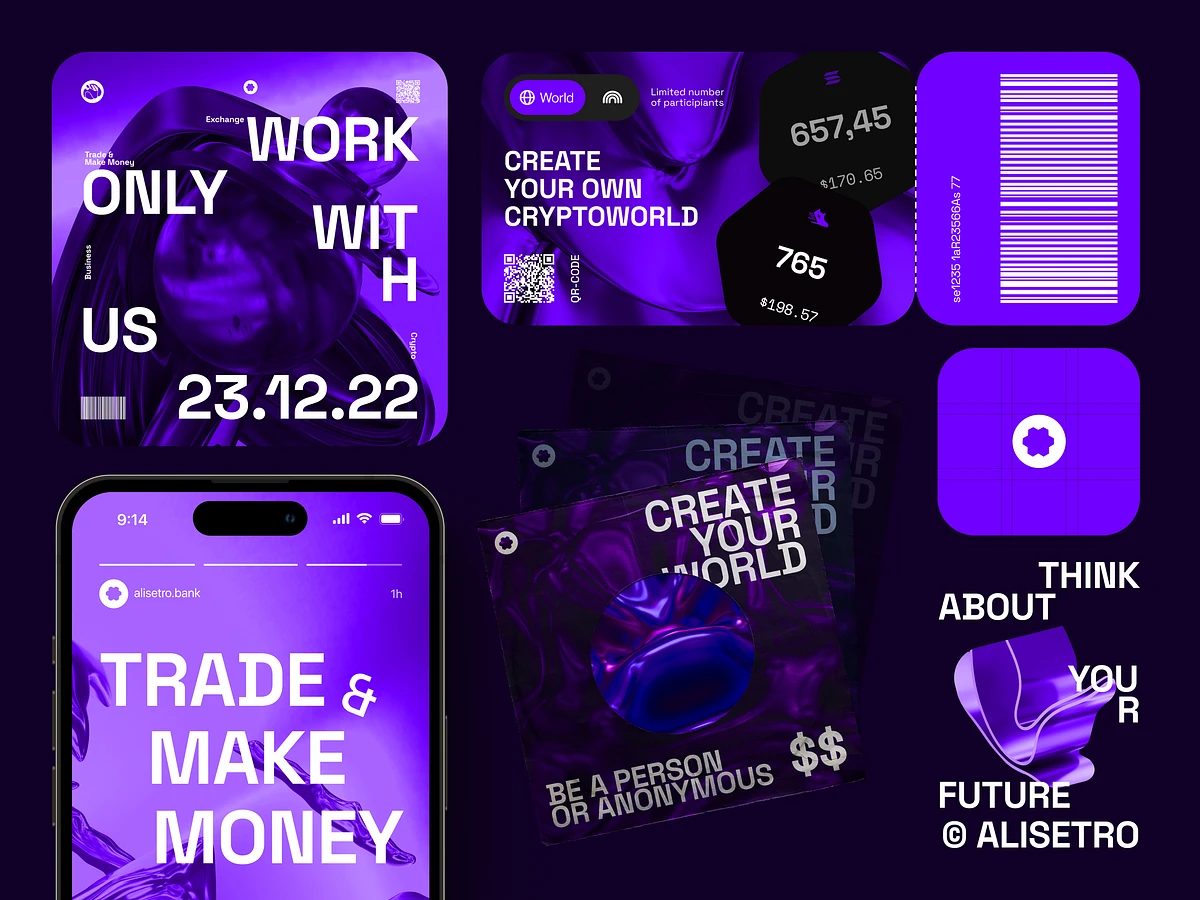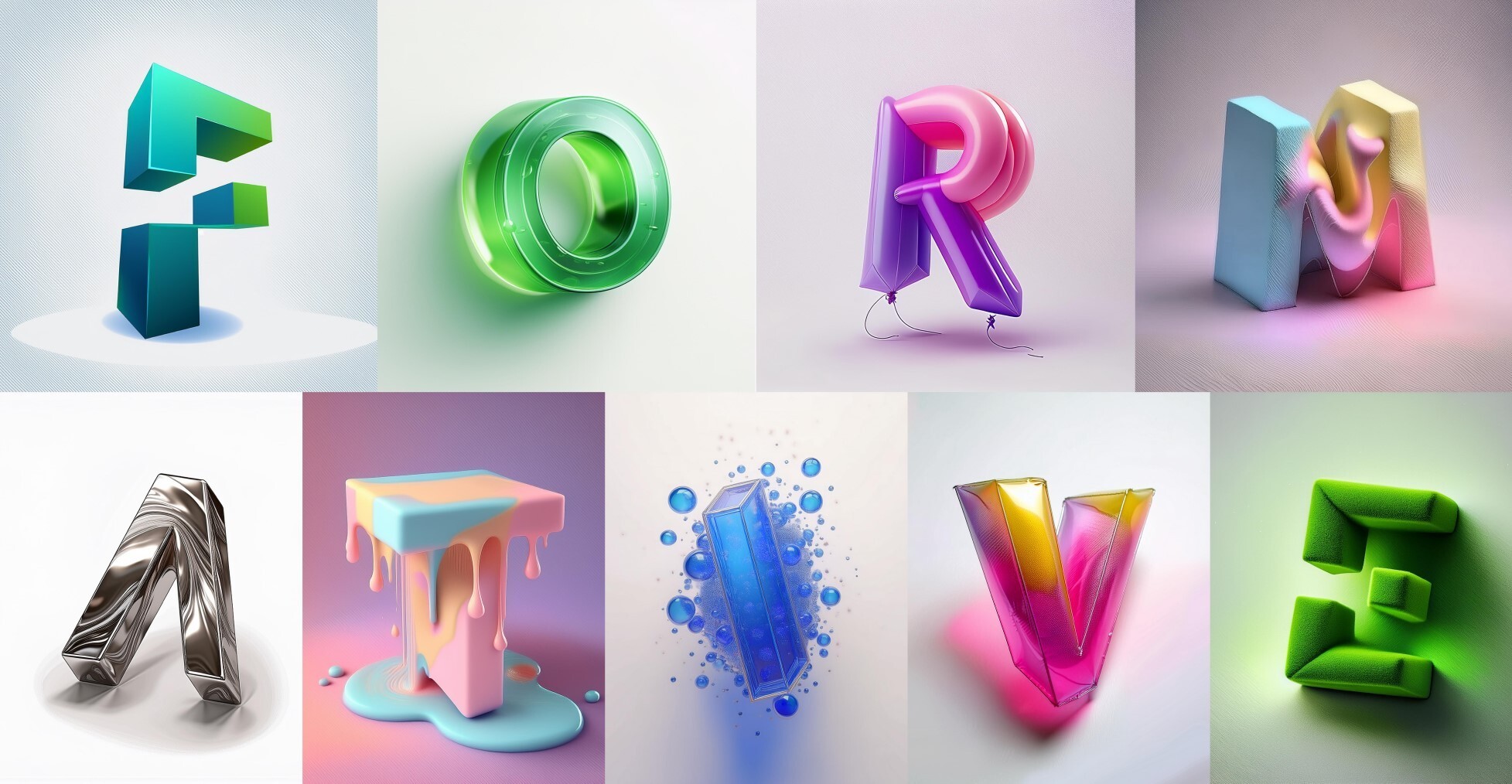In the fast-paced world of design, tech breakthroughs are sparking a creative revolution. With accessible 3D software and cutting-edge AI integration, designers now have an unparalleled toolkit for producing stand-out visuals.
Let’s dive into some of the hottest design developments taking the spotlight this year.
1. 3D design and typography

Accessible 3D tools
The 3D design space has broken free from the confines of specialised studios. Tools like Blender empower designers to create stunning 3D visuals easily, adding depth and texture that elevate projects for more engagement and impact.
Typography meets 3D
Merging 3D effects with typography has become a signature of modern design. The dynamic duo of Adobe Firefly and Adobe Illustrator allows designers to create scroll-stopping text effects effortlessly – ideal for spotlighting stats and powerful editorial statements.
2. Abstract gradients

Contrasting colours
Gradients are evolving with daring, contrasting colour palettes that make designs pop. Vibrant hues paired with neutral tones create striking visuals while, in motion design, gradients can be subtly animated to produce background interest.
Balancing act
Mastering gradients means balancing bright palettes, muted tones and spatial considerations. This approach ensures they enhance rather than overwhelm, adding depth and appeal without overshadowing the overall design.
3. Bold minimalism

Visual impact through simplicity
Bold minimalism is all about making a powerful statement with the simplest of means. Stripping away the superfluous, this trend amplifies the visual impact of minimal elements, creating a distinct style identity.
Statement design
Every element in a minimalistic design counts. Using solid colours and clear space can help secure attention and deliver brand messages with clarity.
4. Pixels

Nostalgia meets futurism
Pixels are back, blending retro vibes with futuristic influences. Using pixelated designs as 'building blocks' to create unique visual identities, this trend pays homage to early digital art while embracing modern applications.

Pixelated typefaces
The use of pixelated typefaces is on the rise, adding character and contrast to designs. This style combines nostalgia with contemporary sensibilities to deliver a memorable visual narrative. Our Formative branding is a case in point, with its strong modular aesthetic that can be easily updated.
5. Maximalism

Rich and dynamic visuals
In a saturated digital world, maximalism grabs attention with its bold, anything-goes approach. This trend revels in bringing multiple design features together, whether clashing or complementary, to create immersive, sensory-rich visual experiences.
More is more
Maximalism celebrates abundance – layering patterns, colours and textures to build depth and visual intrigue. Its ‘more is more’ philosophy champions an explosion of creativity that makes your content impossible to ignore – and full of personality!
6. AI assistance

Pushing boundaries, enhancing creativity
AI is transforming the creative landscape by automating repetitive tasks and offering valuable recommendations. From suggesting colour palettes to streamlining workflows, AI tools are helping free up designers to focus on innovative and conceptual work.
In 2024, the fusion of technology and design is driving creativity. Whether you’re diving into 3D effects, experimenting with abstract gradients, or embracing maximalism, these trends are set to redefine visual storytelling. As AI continues to advance, its ability to broaden creative possibilities will become more critical, making this a pivotal year for designers everywhere.
Author: Ruth Evans

